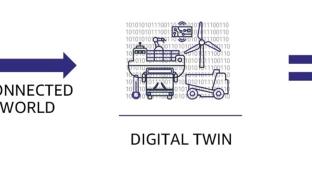Retail Cloud Innovators Series

Why Voice Technology Is the Next Big Trend in Retail
When looking back at the last decade, most people would probably agree that the smartphone was the most impactful thing to affect consumer behavior and, in turn, retail. However, back in 2011, its potential wasn’t nearly as obvious. During a Verizon strategy meeting, I predicted that in five to six years mobile would dominate ecommerce. Very few people agreed with me. Even though we all worked for a mobile company, most people in the meeting still used their desktops to shop online (among other things). At that time, Uber was just out of beta testing and starting their first black car services in San Francisco. And Instagram had only just been launched and was over a year away from being acquired by Facebook, a move that would raise eyebrows among financial and industry analysts.
Considering the decade ahead, I predict that the single most impactful technology on consumer behavior and retail will be voice. Again, many may disagree. However, one fundamental benefit of voice—convenience—aligns directly with consumer behaviors, wants, and needs. It’s this alignment that will influence consumer behavior most in the second half of this decade.
So, what are these consumer trends, needs, and wants? They include the popularity of wireless earbuds, which streamline interactions with ambient voice assistants. Voice assistants are being added to new car models to overcome the inconvenience, distraction, or inability of utilizing touchscreens while driving. Voice is also establishing a place in the home as the primary control method for lights, doorbells, thermostats, cameras, and more. Additionally, the introduction of AI-enabled functionality helps voice assistants with contextual understanding, thereby improving their accuracy and usefulness. Let’s discuss this final trend a bit more.
The Use of AI and Context
When Alexa Conversations was announced, our team used a demo created with Atom tickets, OpenTable, and Uber. The demo shows someone booking two movie tickets, then Alexa asks if they will be eating nearby. They respond yes and ask Alexa to show Chinese restaurants. They select one and request a table at 6pm. Alexa books a table for two at 6pm, and then asks if they need a cab. They respond yes and request an Uber. Alexa then books the Uber.
In this demo, Alexa Conversations utilized various forms of context and AI to smooth the interaction and add value. When looking for a restaurant and table, Alexa Conversations knows the location of the movie theater and that the movie booking was for two people. Again, when Alexa offers to book the cab, it knows where the two people are located, where the restaurant is, and then utilizes Uber's information to calculate a pickup time and approximate cost based on a 6pm arrival time. Finally, when Alexa is asked to play the trailer—even though it has moved to make a reservation with OpenTable and request an Uber—it retains the context of the original movie booking to play the correct trailer without any further instructions.
Voice, AI, and context will prove very powerful. Imagine you’re driving to the airport when Alexa informs you that your incoming United Airlines flight has been canceled due to adverse weather. Alexa has already run through every possibility with United and recommends a reroute. You accept, but now you must change your hotel and rental car bookings. Again, equipped with the reroute details, Alexa offers alternative hotel and rental car options for you to choose from and rebooks everything—without your eyes ever leaving the road. This type of valuable interaction will cement voice interfaces in mainstream usage this decade.
The Impact of Voice in Retail
Any major behavioral trend will directly affect retail. If, as predicted, voice becomes the dominant interface, it will impact both physical and digital retail. Digital retailers will need to support voice for searching and browsing, in turn harnessing its power to deliver richer and more convenient customer experiences. Watch this demo by Speechly to discover the power of voice for ecommerce search. As for physical retailers, it’s not hard to imagine someone walking into an H&M store and asking Alexa to show them what’s new.
Alexa is already being used for payments. Last September, Exxon Mobil activated ‘Pay by Alexa’ at 11,500 of its gas stations across North America. As you arrive at a pump, Alexa knows your location and that you’re at an Exxon Mobil. You can ask Alexa to pay for the gas by verbally activating the pump before filling up and then driving off. The best news for Exxon Mobil is that this is all achieved digitally without any required infrastructure changes for the 11,500 gas stations. Add in extra context, as well as location, and Alexa can order your usual morning coffee at Starbucks while driving to work. No need to open the app, go to favorites/previous orders, and pay. Reordering with caveats and substitutions is simple. Just say, “Alexa, order my usual morning coffee plus an almond croissant at Starbucks.” Alexa places the order, but then tells you that “Unfortunately, they’ve sold out of almond croissants. Is a butter croissant ok?” Again, your eyes have never left the road. This is where ambient voice assistants begin adding extreme value.
Imagine how store employees could also benefit from voice assistants. Routine tasks, such as clocking in, clocking out, and requesting time off, could be handled by simply speaking the request. This functionality would benefit staff that don’t have easy access to a PC or laptop. Furthermore, voice assistants can provide managers with instant access to sales numbers, collect orders, notify them of any anomalies, delivery arrivals, levels of click, etc. These may sound like simple activities, and they are, but what if an hour after opening, Alexa notifies a store manager that dairy sales are down 20% from their usual levels? Upon checking, the manager realizes that dairy hasn’t been fully restocked that morning and rectifies the miss.
The Potential and Power of Voice
My goal is to help you consider the potential and power of voice technology and how it could affect consumers’ and retailers’ daily lives this next decade. If voice does take off as predicted, it will be fascinating to see all the new voice-enhanced uses and customer experiences we have yet to experience. In the meantime, check out how the AWS services behind Alexa, Amazon Lex, and Amazon Polly are utilized by retailers in cloud-native contact centers to power chatbots and voice bots for the growing demand for customer self-service. Moreover, discover how contact center agents are utilizing these bots to improve customer self-service experiences when a bot can't resolve an issue with Amazon Connect.
There are already thousands of retailers globally that have created Alexa skills for their customers. For those of you wanting to participate in improving AI use with context in voice assistants, access developer resources for Alexa conversations. Also note the annual Alexa Prize competition.
If you’re ready to start your own voice journey, then AWS is here to help. Contact your account team today to get started or visit our AWS Retail Overview page.






